The decoration of hides, pots, bone tools and other objects has been a part of American Indian women’s work and leisure time for thousands of years. Many women decorated clothing, blankets, and moccasins with porcupine quills arranged in a design. The design often represented some object (such as bison or a bird) of importance to the woman or her tribe.
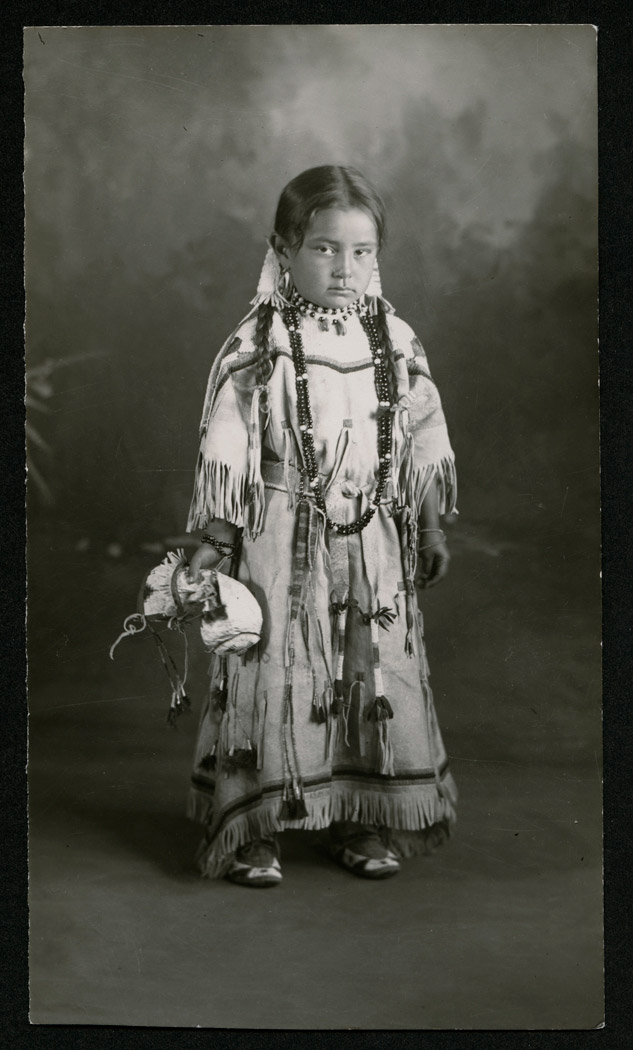
The earliest European traders came to North America with glass beads made in European factories to trade for furs. This trade spread across the continent throughout the 18th and 19th centuries. Many beadworkers of the Great Plains tribes substituted colorful beads for porcupine quills in their decorative work. When American Indians signed treaties and established their lists of annuity goods that they were to receive in exchange for their land, beads were often listed as desirable annuity goods. Reservation traders kept supplies of beads in various sizes, styles, and colors that could be sold or traded to their Indian customers.
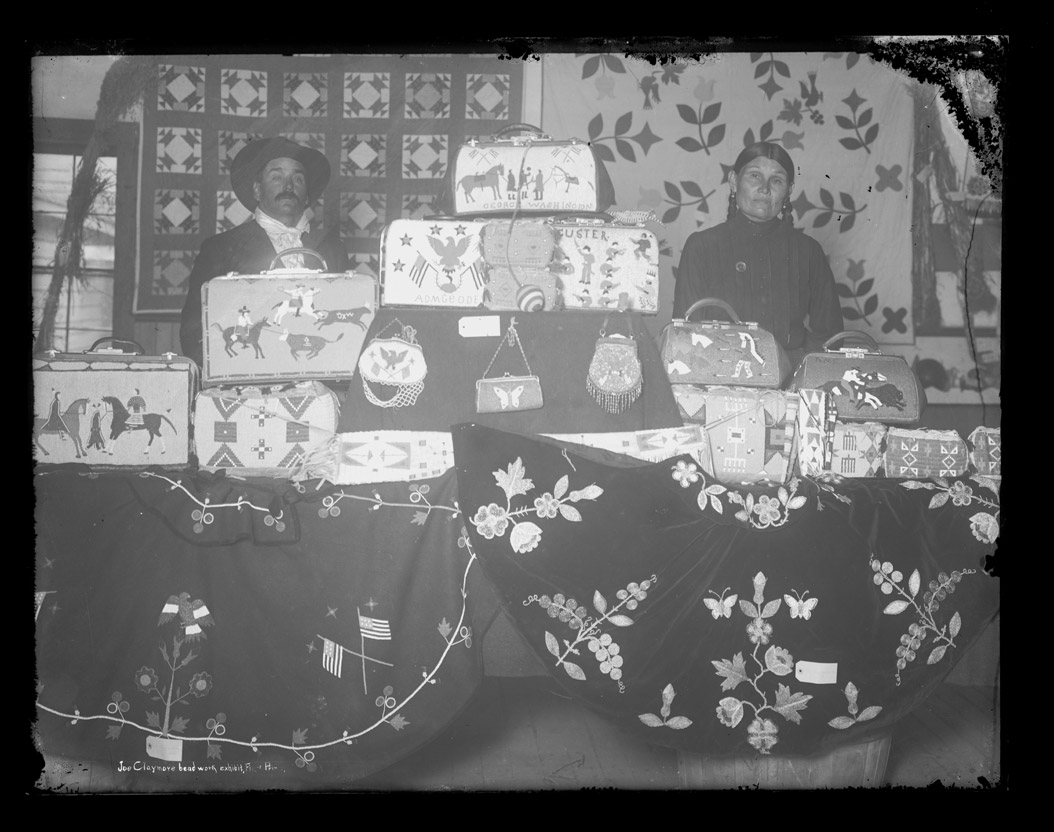
Once reservations were established, women produced more beadwork in more elaborate designs than ever before. They may have had more time for beadwork, since the tribes spent less time hunting, drying meat, and moving camp to find food sources. During the early reservation years, women also found that their beaded objects had value to non-Indian visitors to the reservations. Frontier army officers and their wives recognized the beauty of beaded leather objects. Linda Slaughter of Bismarck knew how important beadwork was for American Indian women. She wrote that "bead work and dressing and embroidering deerskins to be made into garments were the industries of the women . . . and much of their work had artistic merit."
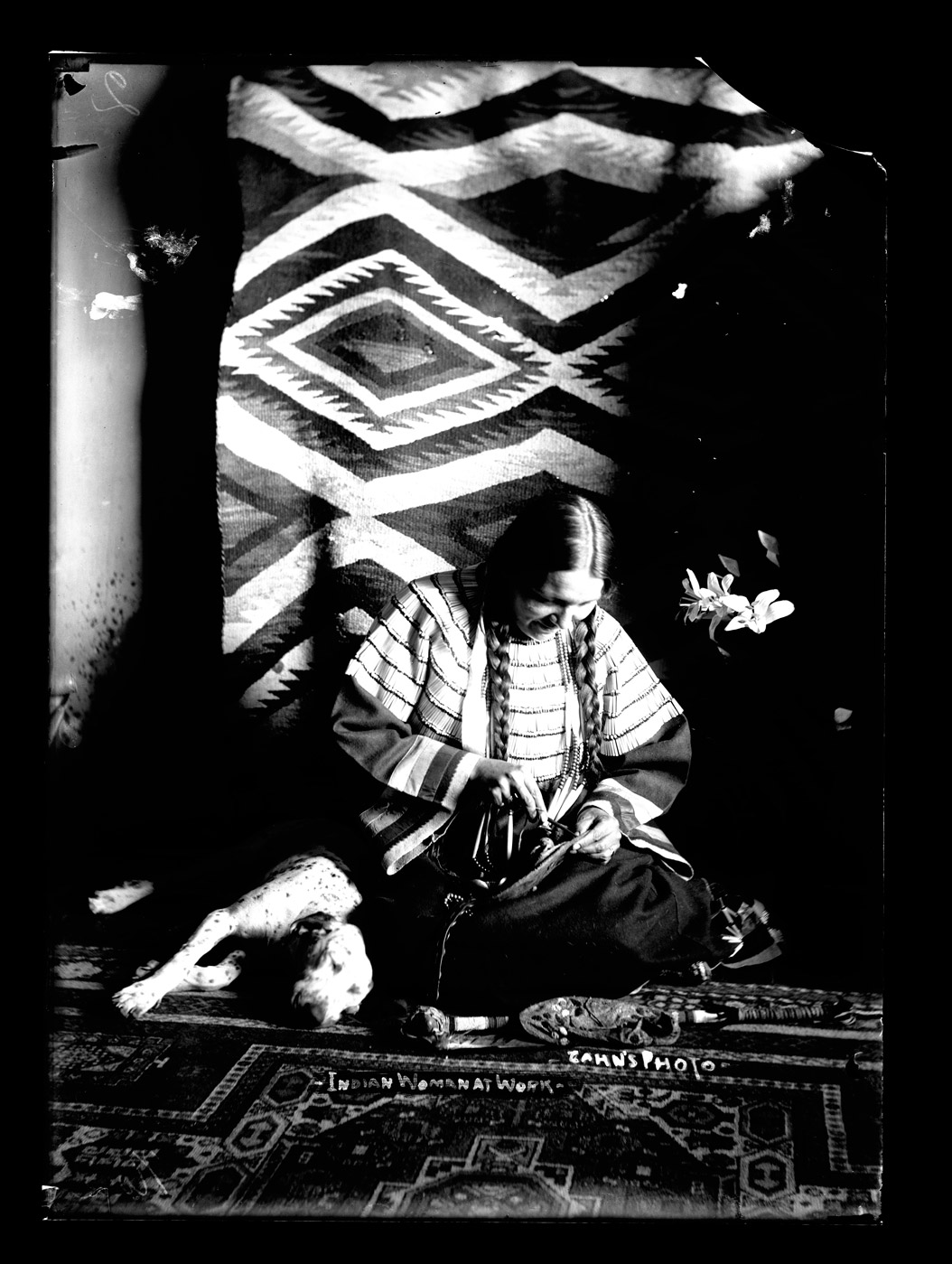
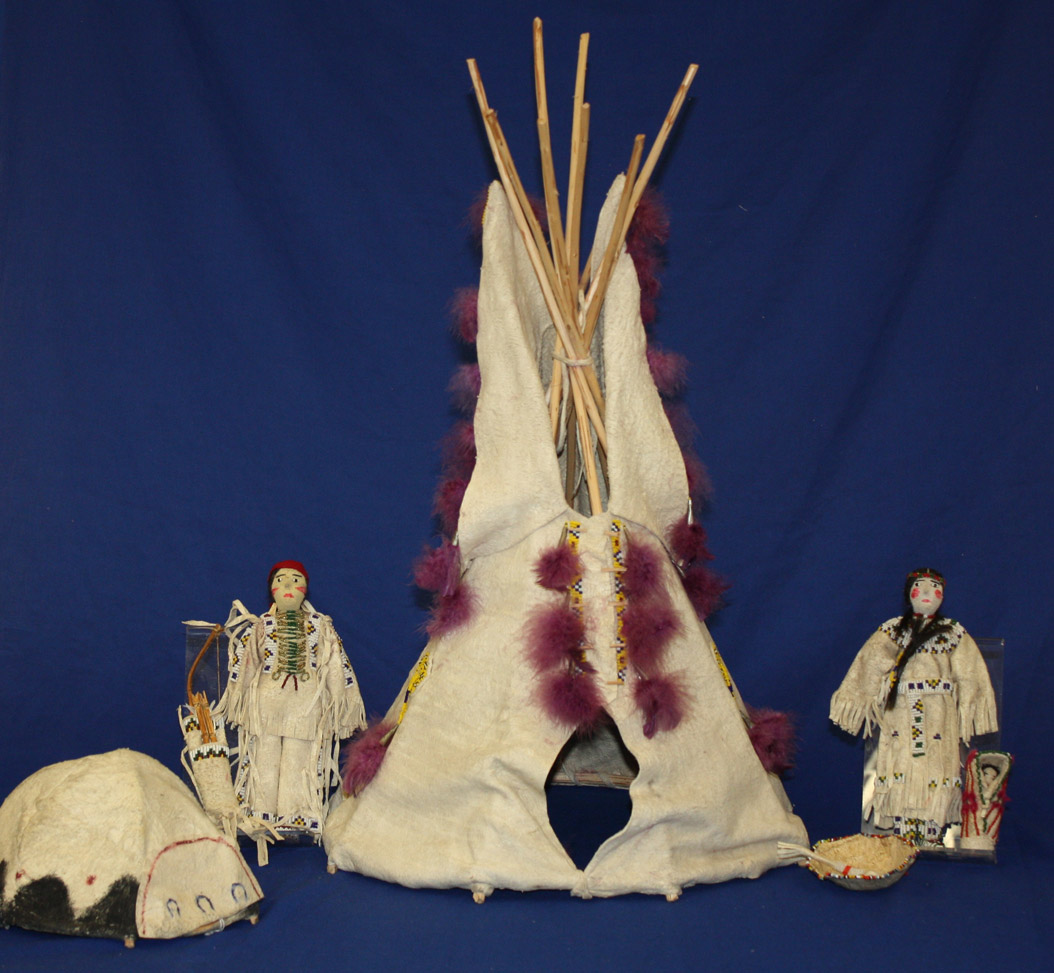
Education of Indian children in day schools and boarding schools usually included developing craft skills. Boys learned welding, carpentry, and blacksmithing. Girls learned to sew, embroider, and knit. Some schools hired American Indian women to teach beading to the students. Students decorated belts, moccasins, and purses. (See Image 17) Schools on the Fort Berthold reservation sent beaded pieces to exhibitions in eastern cities such as Boston. Girls learned to adapt traditional designs to European American interests.
Almost every reservation had a trader’s store. (See Image 18) Traders also recognized the beauty of beaded designs. Traders knew that people living in fine homes in Chicago, New York, and other cities would pay well for these pieces. The traders often asked the beadworkers to change their designs a little to please the collectors.
The products of skilled beadworkers became even more important as more Americans chose to spend their vacations traveling in the United States. Automobiles took tourists to reservations and nearby cities where tourists became customers for American Indian women’s beadwork. (See Image 19) Tourists purchased moccasins, toy-sized tipis, and dolls. (See Image 20) They sometimes bought more elaborate pieces such as beaded shirts.
Document 2: Buffalo Bird Woman on The Cloud Stone
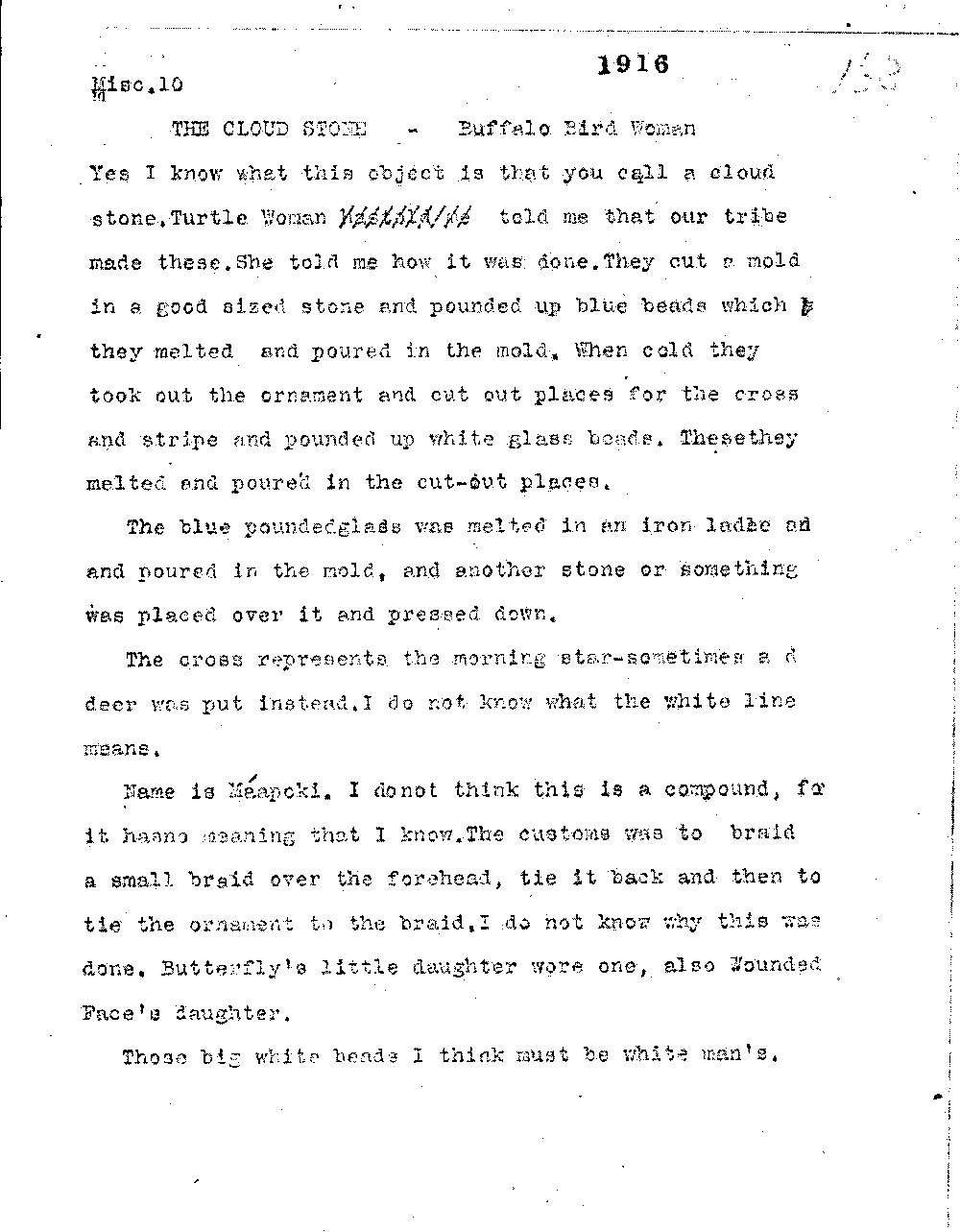
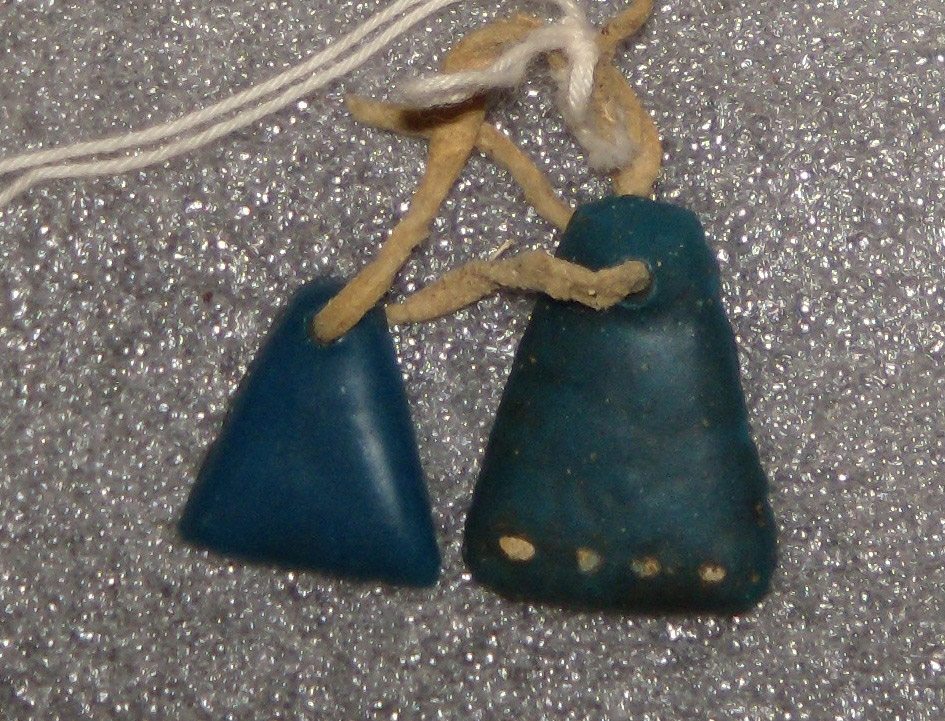
Why is this important?Beadwork was an important economic skill that American Indian women learned from older women and passed on to their daughters and other young women. Before the reservation era, a skilled beadworker could sell her work to others in her village in exchange for meat or horses. During the reservation era, beading took on new significance as a source of cash income. Cash was necessary to purchase food, clothing, tools, and household objects. The cash income earned by beadworkers replaced traditional forms of economic activity such as hunting and gardening.
Today, both men and women apply beads to objects that are both artistic and practical. Beadwork is still an important skill. Skilled beadworkers sell decorated objects to visitors and offer beautifully decorated pieces as gifts. Beading is a tradition that has been adapted as circumstances changed for American Indians. Even though styles, tools, and even the beads have changed, beading is a way that modern American Indians connect with the traditions of their past.


